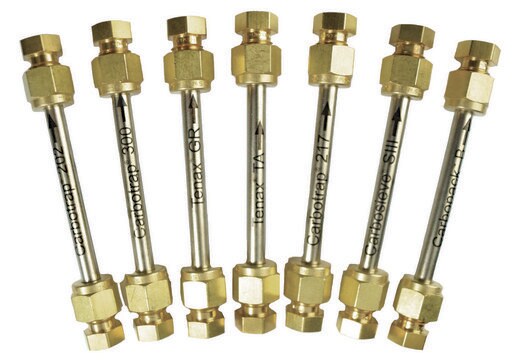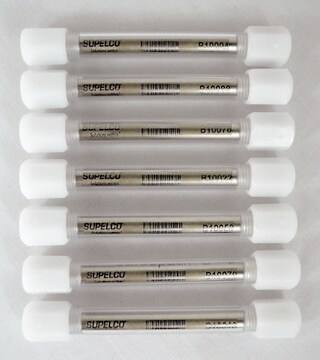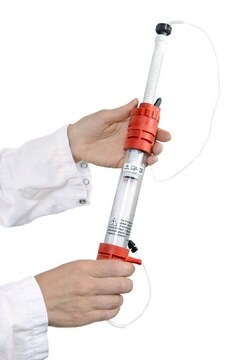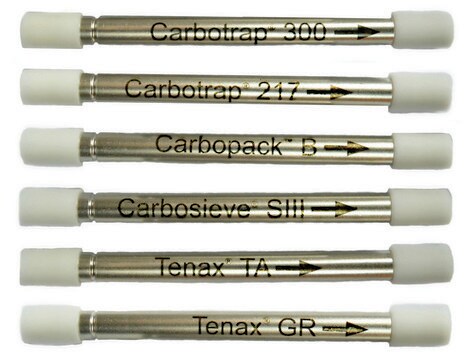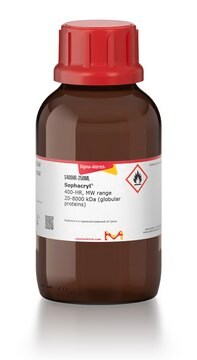29750-U
Carbotrap® 217 Thermal Desorption Tube
glass, O.D. x L 1/4 in. × 3 1/2 in., fritted, preconditioned, pkg of 10 ea
Synonyme(s) :
Carbotrap® 217
About This Item
Produits recommandés
Nom du produit
Carbotrap® 217, O.D. × L 1/4 in. × 3 1/2 in., glass TD tube, fritted, Sealed with Brass Endcaps, preconditioned, pkg of 10 ea
Matériaux
glass TD tube
Niveau de qualité
Agence
EPA TO-14 (Air Toxics)
EPA TO-17
Caractéristiques
fritted
preconditioned
Conditionnement
pkg of 10 ea
Caractéristiques du produit alternatif plus écologique
Waste Prevention
Safer Solvents and Auxiliaries
Learn more about the Principles of Green Chemistry.
sustainability
Greener Alternative Product
D.E. × L
1/4 in. × 3 1/2 in.
Matrice
Carbopack™ graphitized carbon black (GCB)
Carbotrap® 217 Packed with Carbotrap B and Carboxen-1000
Carboxen® 1000 carbon molecular sieve (CMS)
Application(s)
environmental
industrial hygiene
Compatibilité
for use with PerkinElmer, Markes, DANI, OI Analytical, and Shimadzu Instruments
Autre catégorie plus écologique
Vous recherchez des produits similaires ? Visite Guide de comparaison des produits
Description générale
Informations légales
Code de la classe de stockage
11 - Combustible Solids
Classe de danger pour l'eau (WGK)
WGK 3
Point d'éclair (°F)
Not applicable
Point d'éclair (°C)
Not applicable
Faites votre choix parmi les versions les plus récentes :
Certificats d'analyse (COA)
It looks like we've run into a problem, but you can still download Certificates of Analysis from our Documents section.
Si vous avez besoin d'assistance, veuillez contacter Service Clients
Déjà en possession de ce produit ?
Retrouvez la documentation relative aux produits que vous avez récemment achetés dans la Bibliothèque de documents.
Notre équipe de scientifiques dispose d'une expérience dans tous les secteurs de la recherche, notamment en sciences de la vie, science des matériaux, synthèse chimique, chromatographie, analyse et dans de nombreux autres domaines..
Contacter notre Service technique